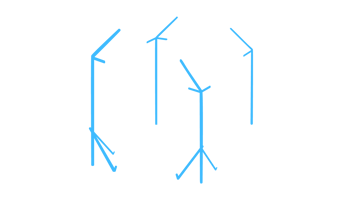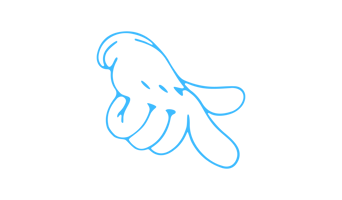Introducing the empathy map of employee experience: understand what it means for your people to work with your organization.
Let's start with a hypothesis:
Employee experience is what people will remember and tell others about the job and the organization ten years after they've left.
If that’s true, there’s nothing wrong with benefits, perks, comfortable office chairs, etc., but those things probably don’t qualify as key drivers of employee experience. Other elements come into focus, such as relationships with team members and leaders; memorable moments, episodes, or quotes; achievements and challenges overcome (on the positive side of things).
To shape the employee experience, an organization needs to look beyond the contract and take a broader look at its business design: that is how people work with & in and not just for the organization that employs them.
What does it mean to work at your organization?
If you take the notion of employee experience seriously, you first need a good understanding of what it actually means to be an employee at your organization. We started with a classical design thinking tool – the empathy map – and adapted it to this question.
Represented in a canvas format, the employee empathy map raises a number of questions, including what does the employee:
-
think and feel?
-
hear?
-
see?
-
say & do?
-
What is his pain, relating to the employee experience?
-
What is her gain, relating to the employee experience?
These questions are extremely basic, and that's the point. Asking basic questions often increases the chance of getting to some counter-intuitive insights (as anyone who’s dealt with small kids will know).
Download the Employee Experience Map for free
Let’s look at some examples to deepen the understanding of the employee experience.
What does the employee herself hear?
-
What do co-workers say?
-
What does the family say?
-
What do friends say?
-
What does the boss say?
-
What does senior management say?
-
What do subordinates say?
Notable differences in language, views expressed or evaluation may point to a fragmented experience as an employee.
What does the employee say and do?
-
What does she say to those around her, along the categories above (co-workers, family, friends, boss, management, her team)?
-
Does she do what she says she does? Or are there reasons she doesn’t always do what she says she’s doing – is it sometimes just a case of “talk the talk” and “walk the walk”?
-
Why (not)? And what is behind potential discrepancies? For example, are internal messages and external messages vastly different – and for what reasons? What does it say about the experience that those differences exist?
What does the employee see?
This question relates to spatial, social, and digital environments that influence the employee experience. Office space plays a role but so do behaviors, attitudes, and interactions with people in the workplace. Digital tools and representations are still gaining additional importance, and in general their usability, security, and user experience has become a more important driver of employee experience.
What does the employee think and feel?
What do employees think, based on what they hear, see, and say, given their experiences and expectations? How do employees feel based on their experiences and expectations? What is it that makes them feel good, what is it that causes discomfort?
What are the employee’s pains and gains?
Going through the map’ fields on the left, you will be able to discover themes describing the employee experience and categorize them as pains and gains. Pains and gains serve as starting points to rethink key elements of the employee experience design and prioritize them in terms of effort and impact.
Informing the future of work – uncovering the true drivers of employee experience
Considering the sample deep-dive questions we’ve posed above helps us make the following points about employee experience. First, employee experience as a concept covers a much broader field than traditional approaches, such as surveys on “employee satisfaction”, have included. Second, drivers of the employee experience go far beyond those elements that are typically specified in a contract. To the contrary, the most important drivers of the experience will relate to fundamental arrangements of the organization, its management, the workplace, and the very purpose of the job. Yet this doesn’t make classical considerations, such as pay and perks (“compensation and benefits”), irrelevant. Discussing the employee experience in all its dimensions situates the “deal” in a much richer context – and provides HR professionals with a wider variety of levers to build and retain human capital.
Shaping the employee experience: the agenda for HR and business designers
Here are three practical steps to shape the employee experience agenda.
1 Answer the “why” question
Give your work on employee experience clear focus. What is the overarching purpose of your employee experience design? What are the concrete goals and outputs of the work? How does it relate to other (HR) initiatives and the overall HR and enterprise strategy? What would success look like?
2 Develop a deep understanding of your employee experience baseline
Work with the empathy map to collect data and observations. Based on a desktop exercise working with the map (‘what do we think the employee experience looks like’), set up an initial round of 8–12 interviews and opportunities for observations with employees, again using the map as a basis. What common themes, insights and issues emerge? What are key drivers the employee experience in your organization, in terms of impact for employee pain and gain?
3 Define and prioritize the design challenges
Based on the results from step two, move from insight to ideation. What are elements of the employee experience that could be shaped by a different business design? There are many principal angles that may become relevant here: the organization of work (e.g. team membership and organizational affiliation), the management structures and practices (e.g. roles of and relationships to superiors), or core HR processes (e.g. performance management or career processes and, yes, also classical comp & ben issues).




